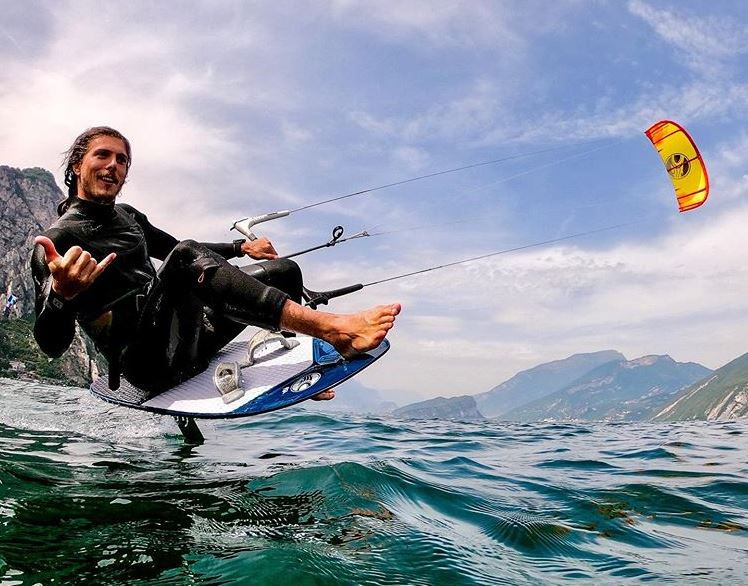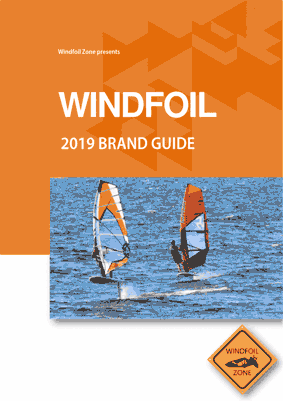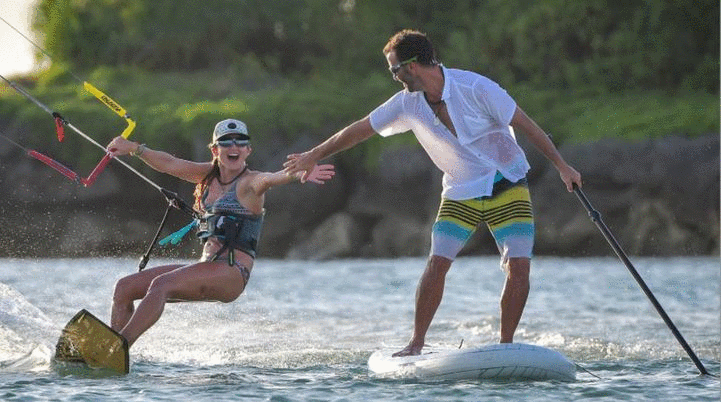Windfoiling vs Kitefoiling, Which Is Better?
- .

- Jul 26, 2019
- 5 min read
Windfoil vs Kitefoil, what is best?
This is the twist of the eternal question: windsurfing vs kitesurfing.
The rivalry between windsurfers and kitesurfers has always been present, but the foiling aspect may actually bring the communities together opposed to against, especially because we are first and foremost foilers! Not to mention, we also love the thrill of flying above the water.
To discuss this hot topic, we have reached out to Daniel Riegler from Austria, who is mastering both kitefoiling and windfoiling. Here he shares his thoughts with us about how close these two foiling sports really are to each other.

Name: Daniel Riegler
Age: 27
Home spot: Lake Achen, Lake Garda, Bavarian Lakes
Sponsors: Cabrinha, Neilpryde (Sails, Waterwear), Jp, Moses Hydrofoils, Tirolsail, Shisha Clothing, Prem Architektur
Social media: @daniel_riegler
Windfoil Zone: Daniel, people are usually choosing between windfoiling and kitefoiling, but you are mastering both, which is quite unique. Tell us your background story!
Daniel Riegler: It started a long time ago! I started windsurfing at the age of 10. In 2005, I decided to start kitesurfing as well when the kites and the safety around it were getting better. I learned by looking at kite magazines. During my holidays I would wake up early to have the beach all to myself.
At my local lake there is not much wind, so I was just kitesurfing and windsurfing Lake Garda, Italy during my holidays for several years.
For me the biggest satisfaction is to always try and learn new things. In 2015, the first kitefoils from the big brands came to Europe and I was pushing myself everyday to learn it fast. The first foils were really difficult to ride.
After a few years of riding and several broken masts and foils (all of which now lay at the bottom of our 133m deep lake), I now use Moses Hydrofoils because the really important aspect for me is the foil resistance to high jumps.
Before I started using Moses I asked Jimmy Mazzanti, Brand Director of Moses and now my friend, if its fine to jump with their foil. He responded. “You can jump to the moon!”. That was exactly what I wanted to hear! Since then, everything has been perfect. Nothing broken and a good quality and price for the foils.

Daniel jumping to the moon!
In 2016, I tried windfoiling during my holidays. Our local shop Tirolsail near Innsbruck received some new gear and let me try it out. If you are a kitefoiler and know how to windsurf, you will be flying over the water in 10 minutes. The windfoil is actually easier to ride than a kitefoil.
Now, when I arrive at my local spot, I usually check out the wind conditions. If there is less than 10 knots, I normally go kitefoiling. With more than 10 knots, I choose whatever foil I’m in the mood for. My largest sails for windfoiling are 7.8 m2 and 8.8 m2, so I don’t need a lot of wind to have lots of fun.
What are the similarities between kitefoiling and windfoiling, and the main differences?
As already mentioned, if you already have a good feeling on a foil, you can easily switch to another foiling sport. I think it is easier to fly the first couple of meters over the water with a windfoil. Kitefoiling is a bit tricky in the beginning.
I don’t exactly know how long it took me to make my first clean foiling jibes but I needed probably several hundreds attempts before flying through on both sides, but it really depends on what foil you are riding.

Windfoil jibe full speed
My biggest tip for both windfoiling and kitefoiling is to get a foil kit where you can swap the front wings: start with a bigger one to learn manoeuvers and then switch to the smaller one if you want to be faster.
Today, it’s really fun to compare the shape of a race windfoil and a race kitefoil. They look totally different. But I’m going to try mounting my windfoil on a kiteboard and I will let you know how it turns out!
Talking about speed, I know that you are are foiling fast! What are your top speeds in both disciplines?
On my Moses Havok kitefoil I nearly achieved 39 knots (about 70 km/h).
On my Neilpryde windfoil, I reached 31.7 knots.
A little trick for going faster: I have sanded my foils with 1000-grit sandpaper. The surface of the foil should never be totally smooth, by sanding this helps to prevent stalling and air bubbles (also called cavitation).

Kitefoiling emerged some years before windfoiling. Why do you think it took so long time for windsurfers to adapt a foil on their board?
I think the levers and forces are even bigger with the windfoil. In order to save the companies numerous warranty cases, I suppose that it was necessary to have several years of R&D work with various reinforced fin boxes to find reliable products ready for the public.
How fast do you think these foils can go in the future?
I think that we will be able to see people reaching 40 knots on a windfoil quite soon. They will have to have a different setup though such as smaller wings with higher aspect ratio (long and thin).
On the kitefoils there are already some people going very fast on racefoils. They can do up to 44 knots downwind (over 80km/h).
So I believe we will for sure see higher top speeds on foils in the future.

We see that foiling is getting more and more popular in every watersport discipline: sailing, surfing, windsurf, kitesurf and even wing-surf. Is this the foil-revolution? How do you see the future of foiling in general?
First of all, foiling has opened a new world for light wind sailing. For windsurfing you need smaller sails and less stuff to carry in your car.
When I started foiling, I thought it was awesome to foil in light winds. You could go out with a 6m sail in light wind and you just had to switch to a normal fin when the wind became stronger, without even rigging a new sail!
But actually, when you start improving, you become inspired to continue foiling even when the wind starts to pick up, despite the feeling of being overpowered. After being able to handle and manage those conditions, you just might ask yourself: “why don’t I just foil?”.
I think you see most foils in places with light wind, and less in windier spots. Generally, people start foiling in windy places after a bit of experience, but they WILL eventually try it!

What is the best advice you would give to a windfoil beginner?
Just do it! In the beginning it may feel like a dangerous sport, but nothing bad has ever happened to me. Buy a good windfoil kit and not a cheap old stuff. If you want to save money, ask Windfoil Zone for tips and buy an aluminum foil.
Don’t buy a race foil in the beginning. Get a beginner foil or a complete foil setup where you can change the wings, and learn the basics, such as flying jibes and tacks.
Last question: you are stuck on a deserted island for one year and can only pick 1 sport, windfoil or kitefoil. Which one would you choose?
I would go with an all-in-one combination of Sup-Wind-Kitefoil and a big wing to have fun in light winds.
I am sure I would have time to build a kite and a windsurf sail on the island, with bamboo mast and boom.
But let’s stop dreaming, the wind is picking up on the lake, let’s go foiling!









Comments